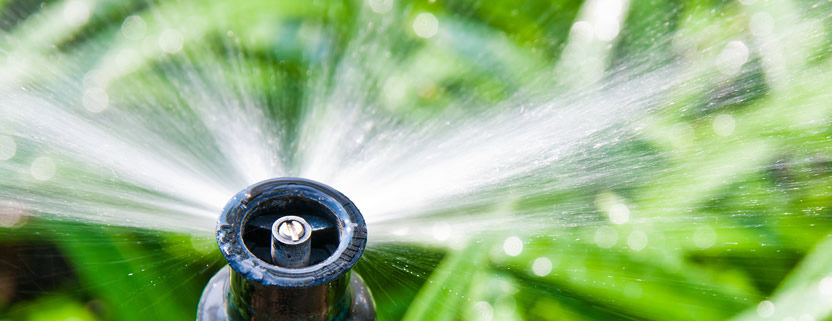Springtime Sprinkler Tune-Up Checklist
Spring will be here soon. For those of you who have automatic sprinkler systems, that means you will be able to start watering your lawns and have green grass throughout the summer. However, an automatic sprinkler system cannot simply be turned on once spring has rolled around. It requires some preparation, which will mean following this handy checklist.
Make Sure The Ground Has Thawed
Just because there is no snow on the ground and the temperature is rising, it doesn’t mean that the ground has completely thawed. It is quite possible that much of your soil is still frozen, which can cause your sprinkler system’s pipes to burst.
Before you turn on your sprinklers, grab a shovel and try to dig into the ground. If you cannot dig deeper than 12 inches into the ground without hitting hard, frozen soil, don’t turn on your sprinklers. Wait a week, and check the soil again.
Check the Irrigation Controls
Your automatic sprinkler system relies on a timer and watering schedule to work properly. Check all of your irrigation controls to make sure that the timer is correct and its battery has enough power. You should replace your timer’s backup battery every six months while you’re at it.
Clean Out Your Yard
Rocks, dirt and other obstructions can do a lot of damage to your sprinklers. They will at the very least keep the water from flowing freely and reaching your lawn. Take a walk through your yard and clear out any debris that could be in the way of your sprinklers before you start them up.
Replace Damaged Components
While you’re clearing out rocks and debris from your yard, take some time to check your sprinkler heads and other components. Anything that has suffered damage or has rusted should be replaced. This goes for valves as well. In fact, your valves are perhaps the most important part of your sprinkler system, so they should be replaced if they aren’t in proper working order.
Avoid the Water Hammer
Water hammer is the effect that high-pressure water surge can have on your pipes when you first turn everything on for the spring. It can burst pipes, damage valves, and otherwise ruin your sprinkler system.
Fortunately, the water hammer is an easy thing to avoid. Instead of just turning on your water all the way right away, turn the valve slowly and let the water flow gently at first. Your pipes will fill with water gradually, and they will be able to withstand enough water pressure to get your sprinklers working properly.
Check the Pressure
Speaking of pressure, you can never assume that it will be at a safe level the first time you turn your sprinklers on. Too much pressure can crack pipes and destroy valves, while too little will render your sprinklers useless.
To make sure that your water pressure is where it needs to be, invest in a water pressure gauge for your home. This device can connect to a hose or a faucet and determine your home’s water pressure. As a rule, anything between 40 and 65 PSI is ideal for the average suburban home with a sprinkler system. Anything more is too high and should be turned down.
Part of the appeal of an automatic sprinkler system is that it can be set to be turned on at certain intervals; you literally just have to set it and forget about it most of the time. However, it needs to be checked over if it is to work properly. Follow these steps every spring, and you can be sure that your sprinklers will be in working order throughout the spring and summer.


Leave a Reply
Want to join the discussion?Feel free to contribute!